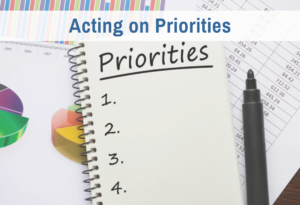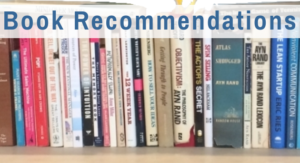Do you have the slightest desire to persuade another person to take an action that you believe is clearly in his or her best interest? If so, run out and buy a copy of Neil Rackham’s 1988 book, SPIN Selling.
Rackham presents the most rational approach to selling that I’ve ever seen. The approach is 100% manipulation-free and gimmick-free. It is fully consistent with the ideas of “Rationally Connected Conversations” that I’ve been sharing — indeed it has already informed my understanding of that method. Moreover, Rackham’s book is one of the most clear, compelling, objective explanations of any kind of method that I’ve ever read.
Most of the people reading this article aren’t interested in selling per se. But who isn’t interested in persuading loved ones to take actions that you see are in their best interests? The method that Neil Rackham explains could easily be adapted to personal persuasion situations.
Rackham’s method involves a special questioning technique. Stephen Covey famously recommends to “seek first to understand, then to be understood.” That’s excellent advice as far as it goes. Rackham breaks down the steps needed to understand the other person’s context.
“SPIN” in the title stands for the four types of questions to ask: Situation questions (S), Problem questions (P), Implication questions (I), and Need-payoff questions (N). The first two types of questions are straightforward and commonly understood. By asking situation and problem questions, you find out the problem another person is having which you might be able to help solve.
Unfortunately, if you stop questioning there — if you immediately jump into asserting you have a solution — or in a personal situation, giving advice — Rackham explains that you will almost certainly get objections rather than agreement.
For example, I’ve been making the case that it’s important to reframe “have to’s” by embracing your power of choice. I am getting a lot of objections to this idea.
Let me give a bit of background in case you haven’t read my recent articles on this topic: I literally go through a decision process which involves identifying negatives and positives for not doing things I feel I “have to” do. Most of the time, this process results in my being motivated to take the critical action, without any need to force myself. Sometimes, I change my mind about whether I will take the action I felt I “had to” take. Consistently using this tactic makes my work incredibly more productive and enjoyable.
But I have been getting pushback, because it takes effort to go through the decision process. Although most people don’t like the pressure of “having” to do something, it doesn’t seem all that bad to them. It seems like it just takes a little effort to make themselves do it. The extra effort to identify values doesn’t seem necessary — especially if the selection will turn out to be the same. I might have intrigued them with the idea that reframing and embracing choice is a good thing, but they don’t see the urgent need for it. The “product” I’m selling seems to be too high cost for the benefit it provides.
My error is that I have been trying to offer a solution as soon as the problem is identified. Rackham’s method adds two more steps between identifying a problem and offering a solution.
First, Rackham recommends you draw out the negative implications of the problem using implication questions. These are very specific questions designed to find out if the problem is really big enough to put in time, money, or attention on to solve.
For example, I might draw out a person’s problems with “have to” with the following implication questions:
In the past, when you have applied pressure like this to yourself, was there any downside? For example, do you find that you get irritable? Could that have any repercussions?
How do you react to delays, difficulties or mistakes when you work under this kind of “have to” pressure? How do these everyday challenges affect your energy when you are doing something because you “have to”? What about when you “want to”?
After you’ve made yourself do this task, will you feel pride in having finished, or just relief that you don’t have to do it any more? Will you be more or less motivated to do this kind of task next time? Have you noticed any decrease in motivation to do things you “have to” do over time? Does it get easier or harder?
I believe I know the answers to these questions. It was asking myself these questions that led me to the conclusion I should always reframe “no choice” using a decision process. But the other person needs to see the issues himself, in a concrete, personally-relevant form. By asking implication questions, I could help the other person see, in his own concrete, specific situation, just how big the problem is.
And then, Rackham suggests asking “Need-Payoff” questions: questions that will elicit — in his words, not yours — what the benefit would be from eliminating these problems.
For my example, a needs-payoff question might be: “So, what would be the long-term benefit of reducing your resistance?” or “If you could avoid that feeling of irritation and frustration, what would that mean to you?”
The effect of asking these questions is that the person you’re talking to names explicitly what would be “in it” for him. Out will come a clearly identified need that is indeed worth time, effort, or money to meet.
If not, well, there is no point in offering the product or the advice, because you have not established the value of it to him in his own mind.
A subtle but real effect of Rackham’s SPIN process is that you change the discussion from how to solve a problem (remove a negative) to how to gain an urgently desired positive. Instead of your offering something that the other person “should” want, he becomes curious about how to gain a value. That’s the ideal opening for you to share your solution.
I just finished reading the book, so it will take me awhile to internalize Rackham’s advice. But I am wildly excited at the prospect of being able to draw out people so that they see the need for what I’m offering before I start explaining what it is.
How am I going to proceed? Happily, the last chapter of the book has specific advice for how to turn theory into practical action. Even if you’re not interested in sales or persuasion at all, it may be worth buying the book to read this one chapter. He recommends four rules:
Rule 1: Practice Only One Behavior at a Time
Rule 2: Try the New Behavior at Least Three Times
Rule 3: Quantity Before Quality
Rule 4: Practice in a Safe Situation
Do these rules sound familiar to you? I’ve never seen such a simple, essentialized set of advice for learning skills before. These insightful rules are going to streamline my own personal development and my teaching from hereon in.
My standard for publicly recommending books is that they have my top recommendation: they are so good they are worth re-reading. Every other book I’ve recommended so far, I had already re-read. I haven’t re-read this one yet, but I am certain I am going to. I made myself slow down and take notes on every chapter as I went through it.
Neil Rackham is a firsthand thinker, who has written a clear, essentialized, compelling book on an important topic. If you are interested in understanding values and/or communicating values and/or developing values in any form, this book is worth reading.








0 Comments